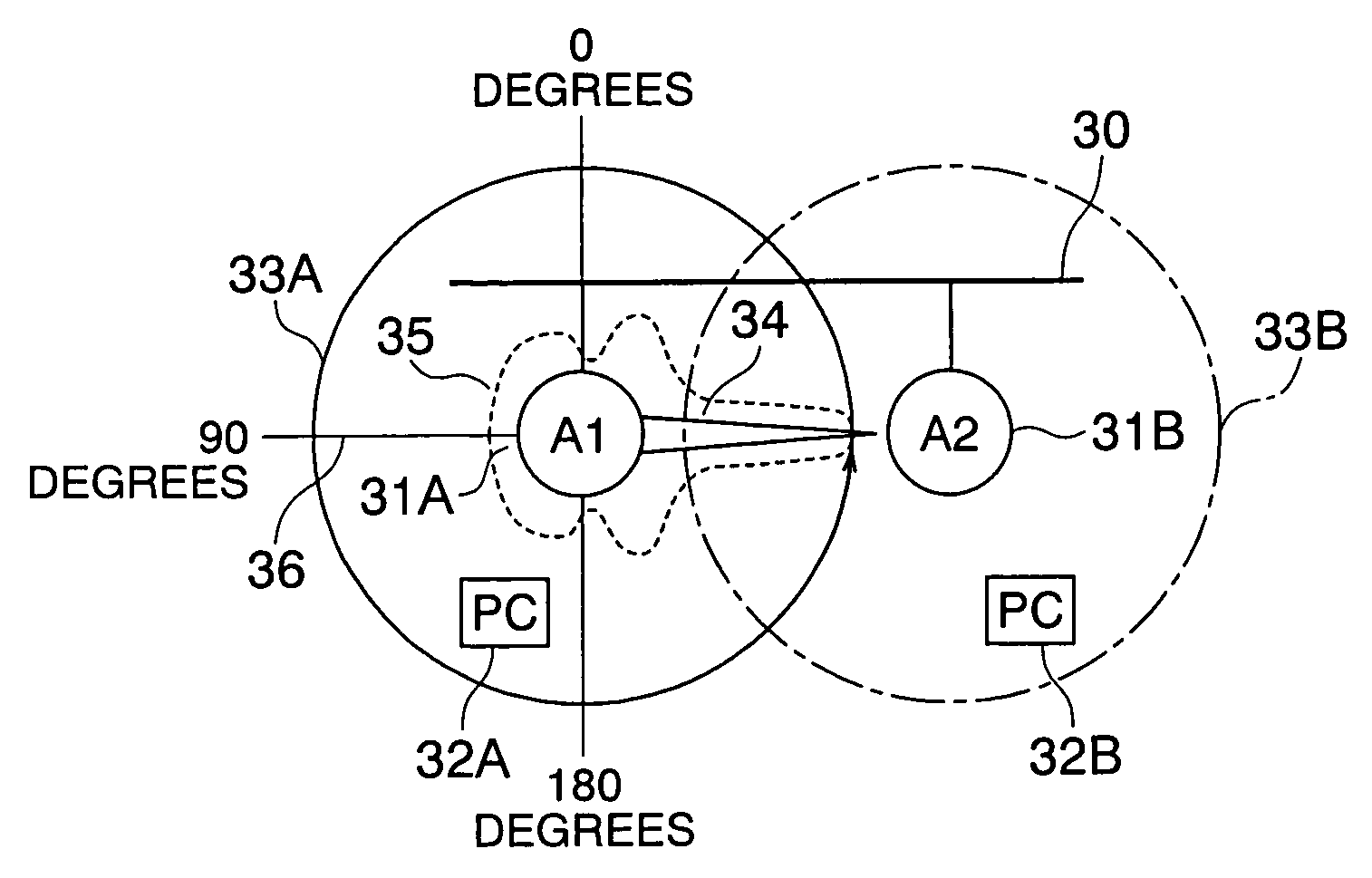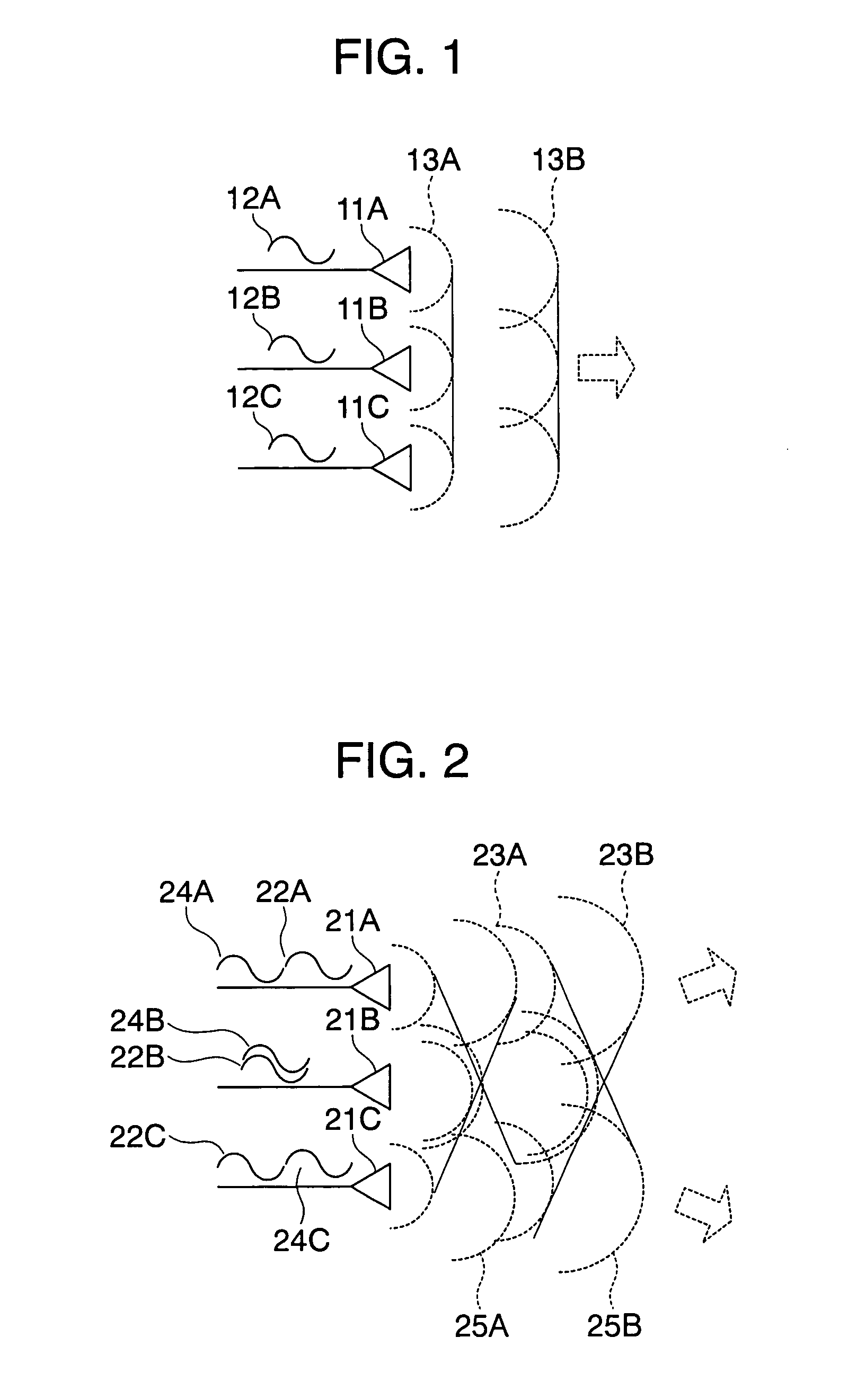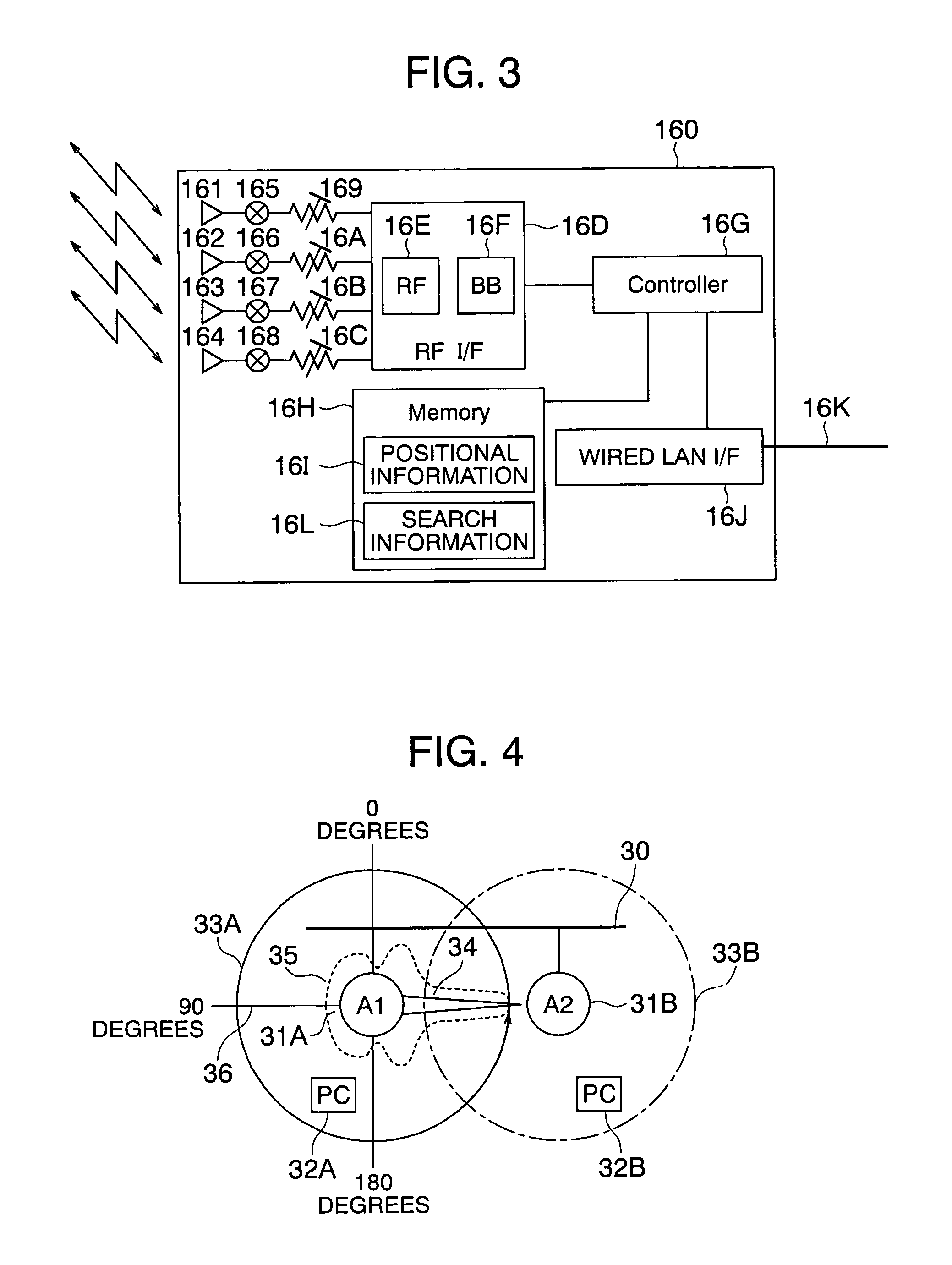Radio base station for wirelessly communicating with a radio terminal
a radio terminal and wireless communication technology, applied in the direction of wireless communication services, transmission monitoring, instruments, etc., can solve the problems of insufficient number of usable channels, inability to set the number of radio base stations installed in the communicatable area of each radio base station larger than the number of channels, and inability to install many radio base stations in the same area. , to achieve the effect of automatic modification of the optimum channel setting or cell setting quickly, and reducing interference between radio base stations
- Summary
- Abstract
- Description
- Claims
- Application Information
AI Technical Summary
Benefits of technology
Problems solved by technology
Method used
Image
Examples
Embodiment Construction
[0036]A radio base station in a radio LAN and a method for controlling the radio base station in accordance with an embodiment of the present invention will be explained in detail with reference to the accompanying drawings.
[0037]FIGS. 1 and 2 are diagrams for explaining directional antennas used in a radio base station in accordance with an embodiment of the present invention. In FIGS. 1 and 2, reference symbols 11A to 11C denote antennas, symbols 12A–12C, 22A–22C, and 24A–24C denote radio waves supplied to the respective antennas, 13A, 13B, 23A, 23B, 25A and 25B denote wave fronts radiated radio waves.
[0038]When it is desired for an antenna to have a directivity, it is a common practice to use a plurality of antennas at the same time. In the example of FIG. 1, the antennas 11A, 11B and 11C are arranged with an equal spacing therebetween, and the radio waves 12A, 12B and 12C are supplied in phase to the antennas. When the in-phase radio waves 12A, 12B and 12C are radiated from the ...
PUM
 Login to View More
Login to View More Abstract
Description
Claims
Application Information
 Login to View More
Login to View More - R&D
- Intellectual Property
- Life Sciences
- Materials
- Tech Scout
- Unparalleled Data Quality
- Higher Quality Content
- 60% Fewer Hallucinations
Browse by: Latest US Patents, China's latest patents, Technical Efficacy Thesaurus, Application Domain, Technology Topic, Popular Technical Reports.
© 2025 PatSnap. All rights reserved.Legal|Privacy policy|Modern Slavery Act Transparency Statement|Sitemap|About US| Contact US: help@patsnap.com



